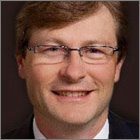Unpublished Opinions
David Chernushenko is an educator, public speaker, film producer and since December 2010, an Ottawa City Councillor. He works to promote prosperous communities and healthy livelihoods. From 2006-2009 he served on Canada’s National Roundtable on the Environment and the Economy. He has written three books on sustainable management practices and is a co-founder of Clean Air Champions, a national charity that involves athletes in tackling air pollution while promoting active living. He served for six years on the International Olympic Committee’s commission on Sport and the Environment.
David is the creator of the Living Lightly Project, a multimedia initiative that shares stories and solutions to build a richer future for all on a healthy planet. He has produced two films: Be the Change, released in 2008. and Powerful: Energy for Everyone released in 2010.
A main street for everyone

This OpEd was published in the Ottawa Citizen today, June 24, 2013.
If an active group of Old Ottawa East residents, supported by Ottawa city staff, is successful, Ottawa may enjoy its first “complete street” by late 2015. Will citizens and councillors welcome this effort to revert Main Street to a livable, economically viable road? Or is a war between urban café users and suburban drivers inevitable?
The debate is really about whether Ottawa’s arterial roads — be they in urban, suburban or rural village locations — should be rebuilt as the incomplete streets they are today, or replaced, when the time comes, by far more desirable Complete Streets.
Since the end of the Second World War, North America has been obsessed with building roads for rush hour. Isn’t it time to start designing roads for the other 21 hours of the day? Do we want to continue prioritizing vehicle flow over the needs of people who want to live on or do business along major streets?
Ottawa has many arterial roads built or rebuilt to maximize volume and speed during rush hour. The rest of the day, these are substandard places for everyone, characterized by excessive speeds, noise and brutally unfriendly streetscapes. The infrastructure (or lack thereof) and atmosphere discourage strolling, cycling and even waiting for a bus. These are places you want to get through as quickly as possible, hence the steady decline of streets like Bronson, Rideau, Montreal Rd. and Merivale.
What a waste! By allocating massive amounts of public space and money to favour just one type of use for one type of user — for three hours a day — we’re squandering valuable resources.
In North America, we have been slowly killing our communities and undermining our cities’ potential through car-centric road design. Complete Streets redraw the balance by enabling safe, convenient and comfortable travel for users of all ages and abilities, regardless of mode of transportation. The goal is not to make driving unbearable, but to make it just one viable option among several for citizens to use (dare I say enjoy).
Complete Streets take many forms, but they generally feature lower traffic speeds, wider sidewalks, more greenery, better crosswalks, attractive street furniture, and dedicated cycling lanes and bike parking.
This cost-effective, safe and sustainable transportation policy benefits everyone. Residents and visitors enjoy a better quality of life, businesses become more attractive places to shop and eat, and taxpayers save through better public health outcomes (lower stress, less pollution, more active citizens, fewer accidents). Even motorists benefit, and not just from the nicer view. By encouraging nearby residents to leave their cars at home, Complete Streets have noticeably higher rates of walking and cycling, and merit better bus service, thereby freeing up road space and parking for those who drive.
Cities like Chicago, Montreal and Vancouver are embracing this approach. Calgary has adopted Complete Streets as its design standard for many streets. In New York, cycle lanes protected by parked cars coincided with a 50-per-cent boost in retail sales and a remarkable change in atmosphere on 8th and 9th Avenues and other such streets.
Ottawa also officially supports Complete Streets, hence the “preferred option” under consideration for the reconstruction of Main Street in 2014-’15. It reduces the number of lanes to make room for wider sidewalks and safer crossings, and should bring improved conditions for local residents. The most conspicuous new feature is a proposed cycle track, a dedicated lane slightly higher than the road but separate from the sidewalk, common in some cities but new to Ottawa. They offer more visibility to cyclists while reducing potential conflict with cars and pedestrians. Crucially, they appeal to aspiring cyclists who continue to drive because they’re afraid to bike in heavy traffic.
Space for such important new infrastructure cannot be conjured out of nowhere, but must be reclaimed from space currently dedicated to cars and trucks. Obviously, this has an impact on the street’s vehicle capacity during rush hour.
Reducing Main from four lanes to two, except at key intersections with turning lanes, will reduce peak capacity from 1,300 to 1,000 motor vehicles per hour at rush hour, the only time such high capacity is needed. Where will the other 300 go? Why would we want to do this?
Here we get to the heart of the matter. Since Ottawa’s official transportation policy is to shift people out of private vehicles wherever possible, it makes no practical or financial sense to continue facilitating the opposite with roads optimized for cars at rush hour. What does make sense is a multi-pronged approach: Improve public transit, encourage telecommuting, carpooling and flexible work hours, and promote walking and cycling by building streets where people feel at ease.
When people complain that drivers will be inconvenienced by fewer car lanes, I don’t hear an argument against improving Main, but a plea to better serve other parts of the city that were long ago promised better public transit. While rebuilding any street in an incomplete form won’t benefit anyone, extending rail and bus service will. I support better service to the outer wards of Ottawa as strongly as I do this campaign to complete Main Street. These should be complementary goals.
We are investing $2.1 billion in the Confederation Line. We are improving O-Train service. We are investing in better cycling infrastructure. So is it not natural and necessary to get serious about Complete Streets? Let’s show the world that Ottawa is above an urban vs. suburban street fight.
More letters from this author:
>> From NIMBY to YIMBY: Embracing community-driven politics in Ottawa



Comments
Be the first to comment